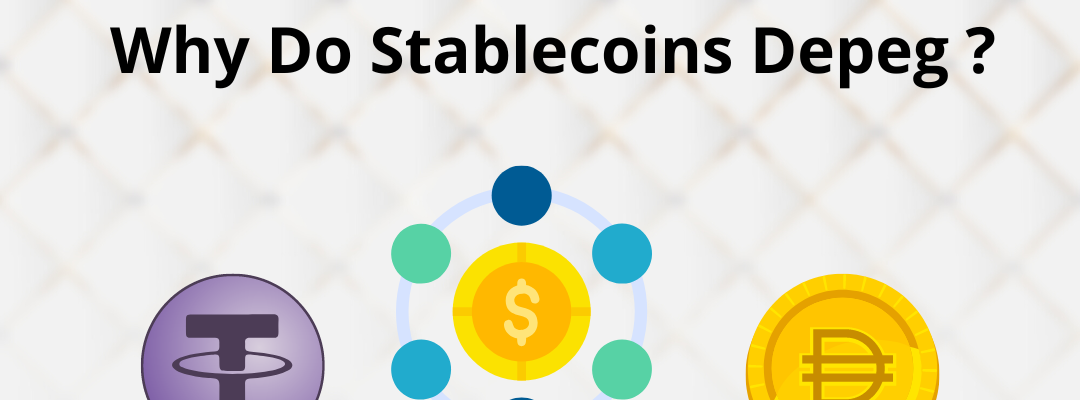Introduction
Stablecoins are the type of cryptocurrencies designed to have stable value for the specific asset which popularly includes the US Dollar, Euro, or Japanese Yen. Thus, these cryptocurrencies offer a regular store of value and also serve as a medium of exchange. Besides fiat currency, the cryptocurrencies and commodities like Gold & Silver are used to collateralize stablecoins. These are algorithmically stabilized through smart contracts, which automatically adjust the supply of stablecoin while maintaining its peg to the underlying assets.
Importance of Stablecoin Pegs
The importance of Stablecoin pegs lies in providing a predictable and stable value. As a result, they are considered a desirable alternative to various use cases which popularly include cryptocurrency trading, payments, remittances, etc. With Stablecoin users can also enter and exit positions in the event of price fluctuations of cryptocurrencies like ETH, BTC, etc. Moreover, it also makes it convenient for investors and companies to run their operations effectively with stablecoins serving as a reliable store of value and medium of exchange. The Stablecoin Pegs have also made cross–border transactions more accessible when compared to conventional financial services. It also promotes financial inclusion for people and enterprises without requiring banks or other traditional financial services.
Is There A Risk Associated With Stablecoin Too?
Despite the potential benefits associated with stablecoins, some risks are indeed associated with them. The most significant of them is the potential for its peg to break. Yes, this may cause its value to lose relative to the underlying asset. This phenomenon is termed Depegging. It refers to an event where the importance of stablecoin deviates significantly from its pegged value. This happens majorly because of market conditions, regulatory changes, and liquidity issues.
Risks Caused Due To Stablecoin Depegging
Depegging stablecoins can create several risks and difficulties for investors, traders, and crypto institutions. Some of the market risks are as follows –
Market Volatility
In such a situation the market may experience severe turbulence as investors and traders would start altering their holdings and leading to market uncertainty and losses.
Reputation Risk
It risks the reputation of the issuer and cryptocurrency ecosystem as it would make it harder for issuers to draw new users leading to a decrease in the market’s total value.
Liquidity Risk
In such a situation traders and investors want to sell their Stablecoin holding in significant proportions but since the value of Stablecoin decreases it makes it challenging for them to liquidate their holdings.
Counterparty Risk
It will expose traders to the risk of default by the issuer of stablecoin or other parties who participate in the stablecoin’s operation due to the depeg event.
Regulatory Risk
If the stablecoins depeg then it may push Governments and authorities to impose restrictions on stablecoins if they find it threatening the stability of the financial system on a broader level.
Why Do Stablecoins Depeg ?
The phenomenon of Depegging leads to significant changes in the value of stablecoins. The stablecoins usually depeg due to the combination of micro and macroeconomic factors.
The Microeconomic factor includes significant shift n the market conditions which includes abrupt changes in demand for stablecoins, problems with liquidity, and any form of modifications to the underlying asset/collateral. Let’s say stablecoin prices can exceed their pegged value when the demand increases due to its increased cryptocurrency trading activities. However, even in this increasing phase if the insufficient liquidity matches the growing demand it may lead to a drop in the prices of the stablecoin.
While on the Macroeconomic front, the high inflation which in turn directs the purchasing power of the underlying assets can give rise to the depeg event. Also, any changes in the interest rates or other regulatory measures may create an impact on the demand for a stablecoin. Alongside, the regulatory or legal issues such as a ban on stablecoins or technical glitches such as smart contract bugs, network congestion, hacking attacks, etc.
Final Words
Recently, several stablecoins have been the victim of micro and macroeconomic factors, of which USDC has been the talk of the town. USDC which is the fully – reserved stablecoin de-pegged from the US dollar due to the collapse of Silicon Valley Bank. This stablecoin also experience de-pegging in 2018 when the overall stability mechanism of the stablecoins was questioned. However, industry experts believe that diversification can help lessen the risk associated with the de-pegging of the stablecoin.






